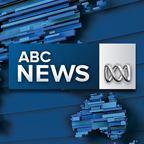
Posted
 Photo:
The US' airport security crackdown is already affecting the country's tourism sector. (Reuters: Kate Munsch)
Photo:
The US' airport security crackdown is already affecting the country's tourism sector. (Reuters: Kate Munsch)
Its formal name is the Executive Order Protecting the Nation From Foreign Terrorist Entry into the United States, but is President Donald Trump's new executive order in fact a 'Muslim Ban 2.0'?
That is the contention of Hawaii Attorney-General Doug Chin.
Hawaii became the first state to challenge the US President's revised travel ban and a hearing is scheduled for next week.
The new executive order prohibits foreign nationals of six predominantly Muslim nations from entering the US for 90 days.
Among the changes from the first order, travellers from Iraq are no longer banned. Neither are those who have visas or hold a US Green Card.
The executive order is slated to take effect on March 16 and US Secretary of State Rex Tillerson says, "President Trump is exercising his rightful authority to keep our people safe".
The state of Hawaii begs to differ: "This second executive order is infected with the same legal problems as the first Order — undermining bedrock constitutional and statutory guarantees."
Mr Trump's first ban sparked chaos and protests at airports across the country.
As the legal skirmish for the revised order gets underway, it seems those from banned countries are not the only ones who may give the US a miss in coming months.
Several Australians have told me they have put their US travel plans on hold. And Australians are not the only ones.
Travel analyst ForwardKeys, a company that predicts travel patterns, says the travel ban has hurt bookings.
"Travel to the USA suffers 6.5 per cent Trump slump," proclaims the company's website.
Of course, millions will still visit the US, but the changes seem to have made entering the country just that bit harder.
When I arrived in the US at the end of February, I was reminded international travel sometimes ranks up there with root canal surgery as a painful exercise.
Los Angeles International Airport (LAX), had lengthy queues of passengers winding their way through customs.
I exited with a sigh of relief — only to discover the lines for connecting flights.
"Holy Mother of God," breathed an Australian next to me. "Another queue."
I had the benefit of travelling on a US passport, but it was still tough.
Travel crackdown could hurt Americans the most
A few days later, in tourist mecca New York, I found signature stores in Manhattan decked out in red, white and blue. Freedom Tower downtown shimmered in the sun. The city was at its vibrant, sassy, bossy best.
But the Big Apple is bracing for the economic impact of fewer foreign visitors. Tourism agency NYC & Company forecasts 300,000 fewer international visitors than in 2016 — the first drop in seven years.
The US Travel Association last week chimed in, saying the President's immigration policies are hurting tourism.
The White House disputed this. But an estimated 18 million Americans work in industries connected to tourism.
While the President has taken credit for returning thousands of manufacturing jobs to the US at companies such as Carrier, a major tourism downturn could cost the US economy billions of dollars and wipe out tens of thousands of jobs. There is growing alarm.
As the latest travel ban was debated, it was perhaps ironic that a crackdown by the Transportation Security Administration (TSA) indicated it might be Americans, rather than foreigners, who are the biggest risk.
As I hopscotched between airports, I noticed overall airport security was more vigilant than usual. The random "pat-down" I received at Denver International Airport was more robust than I had remembered.
I was experiencing first-hand (so to speak) the TSA's new standardised pat-down procedures. The new protocol is more thorough and includes "sensitive" areas.
But the TSA says there are reasons for the crackdown.
Gun-toting travellers
On March 2, as I travelled from Virginia to New York, a North Carolina man was detained at Charlotte Douglas International Airport.
At 6:00am, he had tried to bring a loaded handgun through airport security. Thirty minutes later, another man attempted to do the same thing.
The two incidents seemed unrelated — which is perhaps even more disturbing.
It seems more and more Americans consider essential travel items to include toothpaste, toothbrush, shampoo … and a weapon.
How many people are trying to bring guns on planes?
In 2016, the TSA confiscated 3,391 firearms — a record — and a 28 per cent increase from 2015.
Adding to the anxiety, more than 80 per cent of the weapons seized were loaded.
The worst day ever for the TSA was February 23 this year when it discovered 21 weapons in a single day.
As the sign in the customs hall at LAX said: "Welcome to the United States of America."
Topics: donald-trump, travel-and-tourism, travel-health-and-safety, defence-and-national-security, security-intelligence, united-states






 Add Category
Add Category


